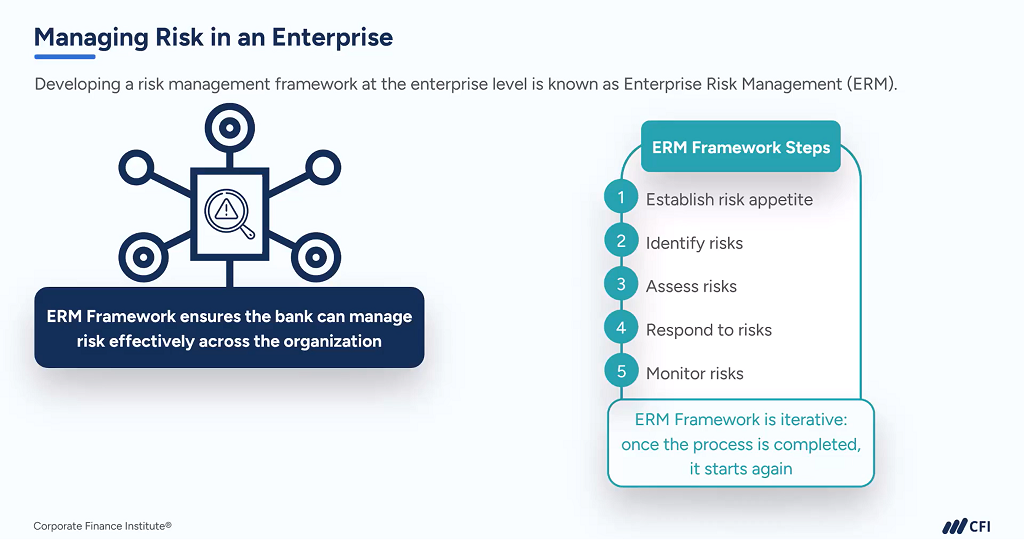The Influence of the Importance of Risk Management on Business Governance
The Influence of the Importance of Risk Management on Business Governance
Blog Article
Discovering the Relevance of Risk Management for Effective Decision-Making Methods
In the elaborate world of company, Risk Management arises as a crucial variable in the decision-making process. The capability to identify potential threats and opportunities, and strategize as necessary, can mean the distinction in between success and failing.
Understanding the Principle of Risk Management
Risk Management, a crucial component in decision-making, is typically misinterpreted or oversimplified. Normally, it refers to the identification, evaluation, and prioritization of dangers to lessen, check, and control the chance or influence of unfortunate events. Nevertheless, it's not simply concerning preventing negative outcomes, but additionally regarding identifying possible chances. Risk Management entails self-displined and organized techniques, making use of data and insightful evaluations. It requires an extensive understanding of the organization's context, goals, and the potential threats that could prevent them. From economic uncertainties, lawful liabilities, strategic Management mistakes, to mishaps and all-natural catastrophes, it attends to different risks. Notably, effective Risk Management is not stagnant; it's a continuous, progressive procedure that progresses with changing conditions.
The Duty of Risk Management in Decision-Making Processes
In the realm of critical preparation and organization procedures, Risk Management plays an integral function in decision-making procedures. It aids in recognizing possible dangers and unpredictabilities that can affect the achievement of organization purposes. By tracing these dangers, firms can develop methods to alleviate their influence, making certain service continuity and security. Risk Management hence ends up being an important device in decision-making, assisting leaders to make enlightened options based on a detailed understanding of the threats entailed. It urges a positive technique, allowing organizations to prepare and expect for possible future scenarios. This dramatically decreases the possibility of adverse effects, advertising much more effective and effective decision-making strategies. Risk Management offers as an essential element in the decision-making processes of any company.

How Risk Management Improves Strategic Planning
In the context of strategic planning, Risk Management plays an essential function. Launching with the recognition of prospective dangers, it better encompasses the application of Risk reduction steps. The role of Risk Management is not fixed however dynamic, as it demands constant monitoring and adjusting of approaches.
Identifying Prospective Risks

Executing Risk Reduction
Risk mitigation approaches can vary from Risk evasion, Risk transfer, to risk reduction. Each approach must be customized to the particular Risk, considering its potential influence and the organization's Risk resistance. Efficient Risk reduction calls for a deep understanding of the Risk landscape and the prospective impact of each Risk.
Monitoring and Readjusting Approaches
Though Risk mitigation is a critical action in strategic preparation, continuous monitoring and adjustment of these strategies is equally vital. This recurring process allows companies to determine new threats and reassess existing ones, ensuring the applied approaches stay reliable in the ever-changing organization atmosphere. It additionally offers a possibility to assess the success of the Risk Management measures, permitting changes to be made where needed, additional boosting calculated preparation. Efficient tracking and change require using analytics and crucial efficiency signs (KPIs) to gauge performance. These devices provide beneficial data-driven insights that can notify tactical decision-making. Therefore, monitoring and readjusting Risk Management techniques is a vital element for enhancing an organization's strength and tactical preparation.
Instance Researches: Effective Risk Management and Decision-Making
On the planet of organization and money, effective Risk Management and decision-making often pop over to this web-site act as the pillars of prosperous ventures. One such entity is a multinational oil company that minimized monetary loss by hedging versus changing oil costs. In one more instance, a technology start-up prospered by recognizing and accepting risky, high-reward methods in a volatile market. An international bank, confronted with governing uncertainties, successfully browsed the situation with proactive Risk assessment and vibrant decision-making. These situations highlight the value of sharp Risk Management in decision-making procedures. It is not the lack of Risk, however the Management of it, that frequently distinguishes successful firms from unsuccessful ones. These instances highlight the critical function of Risk Management in calculated decision-making. importance of risk management.
Devices and Methods for Effective Risk Management
Browsing the elaborate maze of Risk Management needs the ideal set of techniques and go to the website devices. These tools, such as Risk registers and warmth maps, aid in recognizing and analyzing possible dangers. Strategies consist of both quantitative approaches, like level of sensitivity analysis, and qualitative techniques, such as SWOT analysis. These assistance in prioritizing risks based upon their possible influence and chance. Risk action methods, a key element of Risk Management, entail approving, avoiding, transferring, or mitigating risks. Tracking and regulating risks, with routine audits and evaluations, make certain that the approaches remain effective. With these tools and techniques, decision-makers can navigate the complicated landscape of Risk Management, thus promoting educated and reliable decision-making.
Future Patterns in Risk Management and Decision-Making Approaches
As we discover the vast landscape of Risk Management, it becomes obvious that the methods and devices utilized today will certainly continue to develop. The principle of Risk culture, where every member of an organization is conscious and entailed in Risk Management, will get more prominence. These patterns herald a more comprehensive and aggressive method in the direction of Risk Management and decision-making.
Verdict

Risk Management therefore ends up being a vital tool in decision-making, assisting leaders to make informed options based on a detailed understanding of the threats entailed. Risk reduction strategies can vary from Risk avoidance, Risk transfer, to run the risk of reduction (importance of risk management). Efficient Risk reduction calls for a deep understanding of the Risk landscape and the potential impact of each Risk. Risk feedback strategies, a vital element of Risk Management, entail approving, staying clear of, moving, or mitigating dangers. The idea of Risk culture, where every member of an organization is aware and entailed in Risk Management, will gain much more importance
Report this page